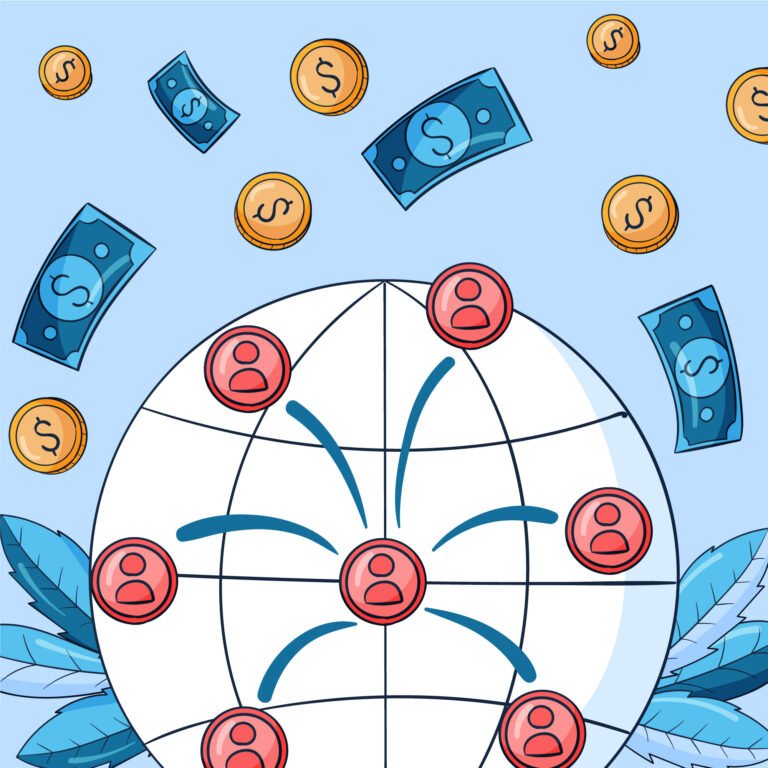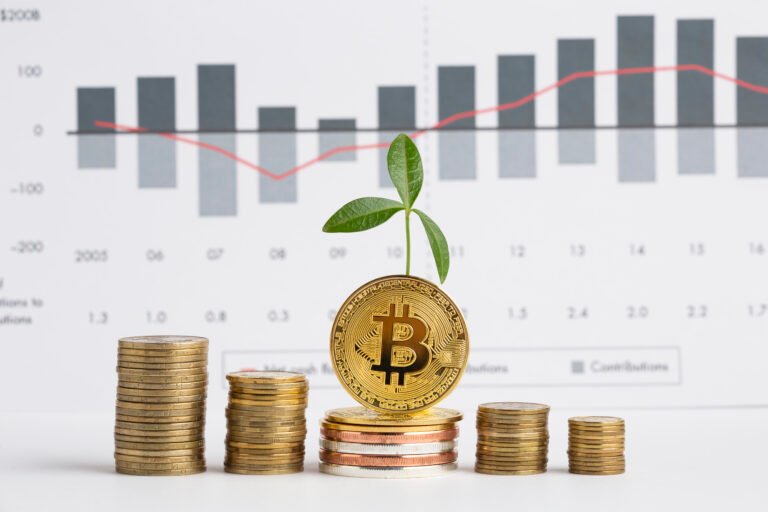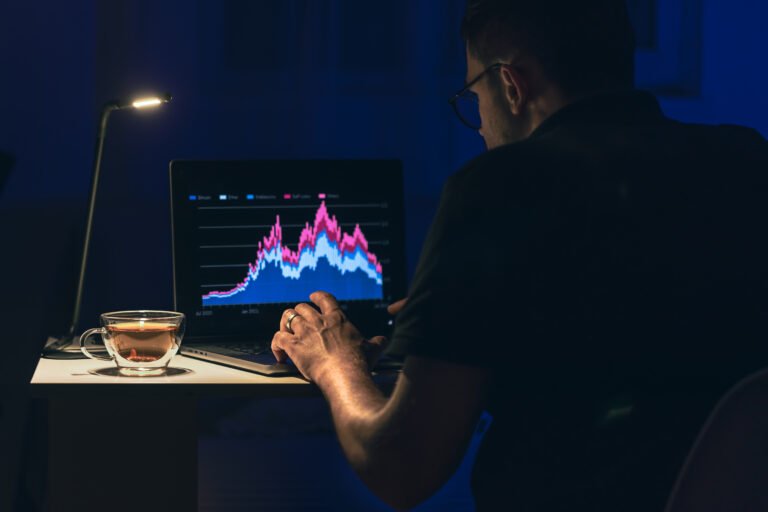How to Analyze Crypto Rates Before Buying
1. Why Crypto Rate Analysis Matters
Cryptocurrency markets are fast-moving, volatile, and often influenced by more than just numbers. Many new investors jump in based on hype, social media trends, or fear of missing out (FOMO)—only to buy at a peak and sell at a loss. That’s why analyzing crypto rates before buying is not just helpful—it’s essential.

Table of Contents
Avoiding Emotional Decisions
Emotions are the enemy of successful investing. Fear and greed can lead to buying high and selling low. With proper analysis, you can make data-driven decisions rather than reacting impulsively to short-term market movements or social buzz.
Maximizing Entry Points for Profit
Every cryptocurrency has its highs and lows. By studying historical price charts, market patterns, and trading volumes, you can identify ideal entry points—when a coin is undervalued or showing signs of a breakout. This maximizes your chances of buying low and selling high.
Understanding Market Behavior
Crypto doesn’t move randomly. It reacts to trends, news, macroeconomic events, and investor sentiment. By learning how to interpret rate fluctuations, you gain insight into market psychology and can better predict potential price movements.
2. Understanding the Basics of Crypto Rates
Before diving into advanced analysis, it’s crucial to understand what crypto rates actually represent. Many beginners mistakenly assume there’s a single “universal price” for a coin, but rates can vary by platform, pairing, and method of calculation.
What Are Crypto Rates and How Are They Calculated?
A crypto rate refers to the current market price of a cryptocurrency at a specific point in time. This rate is determined by real-time trading activity—the price at which buyers and sellers agree to transact. Factors influencing this rate include:
- Supply and demand
- Market liquidity
- Order book depth
- Volume of trade on a specific exchange
Different platforms may show slightly different rates due to variations in trading volume and liquidity across exchanges.
Spot Price vs. Average Price vs. Index Price
- Spot Price: The current price of a crypto asset available for immediate purchase or sale. It reflects the last traded price on a specific exchange.
- Average Price: A calculated value based on the average of prices across multiple exchanges, often over a set time frame (e.g., 24 hours).
- Index Price: A composite price derived from several leading exchanges. It’s used in futures and derivatives markets to avoid manipulation from a single exchange.
Understanding these distinctions helps investors avoid confusion and ensures they are comparing apples to apples when assessing crypto value.
Fiat Pairings: USD, USDT, BUSD, and Others
Crypto rates are often quoted against fiat currencies or stablecoins, such as:
- USD (US Dollar) – The most common benchmark.
- USDT (Tether) – A widely-used stablecoin pegged to the dollar.
- BUSD (Binance USD) – Another dollar-pegged stablecoin, mostly used on Binance.
- EUR, INR, PKR, etc. – Local currencies may also be used on region-specific exchanges.
Always check which fiat or stablecoin a crypto is paired with, as it can affect the rate due to conversion costs, exchange spreads, or differing liquidity pools.
3. Key Metrics to Analyze Before Buying
Analyzing crypto rates goes beyond just checking the current price. To make smart investment decisions, you need to evaluate key metrics that reveal the coin’s market strength, trading activity, and potential risks. Here are the most important ones to look at:
Market Capitalization and Volume
- Market Capitalization (Market Cap) = Current Price × Circulating Supply.
It shows the overall value of a cryptocurrency. A higher market cap often indicates greater adoption and stability. Coins are generally categorized as:- Large-cap (e.g., BTC, ETH) – More stable, lower risk.
- Mid-cap – Moderate risk and growth potential.
- Small-cap – Higher risk, but possible high returns.
- 24-Hour Trading Volume: Reflects how much of the coin is being traded within a day. A high volume indicates active interest and liquidity, while low volume may suggest risk of price manipulation or lack of demand.
Liquidity and Order Book Depth
- Liquidity refers to how easily a cryptocurrency can be bought or sold without affecting its price. Highly liquid coins have tighter spreads between buy and sell prices.
- Order Book Depth: Examines the number of buy and sell orders at various price levels on an exchange. A deep order book shows strong support and resistance zones, helping traders identify where price might stall or reverse.
✅ Tip: Avoid low-liquidity coins if you’re making large trades—they can be hard to sell without incurring slippage.
Volatility Index and Price Trends
- Volatility measures how much the price fluctuates over time. High volatility means bigger risks—but also bigger potential rewards.
- Price Trends help identify whether a coin is in an uptrend, downtrend, or ranging sideways. Look at:
- 7-day, 30-day, and 90-day price changes
- Moving Averages (like 50-day or 200-day MA)
- Recent highs and lows
These indicators help determine whether it’s a good time to buy, wait, or sell.
4. Fundamental Analysis (FA) of Cryptocurrencies
While price charts show where a coin has been, Fundamental Analysis (FA) helps you understand where it might go in the future. It involves evaluating a crypto project’s core purpose, team, technology, and token structure to assess long-term potential.
Project Purpose and Utility
Ask the critical question: “What problem does this project solve?”
- Is it offering real-world utility or just hype?
- Does it have a unique value proposition compared to competitors?
- Is there genuine demand for its use case, like DeFi, gaming, NFTs, AI, or enterprise solutions?
A strong, useful project with real adoption potential will usually sustain growth better than hype-driven tokens.
Developer Activity and GitHub Commits
High developer activity usually means continuous improvement and a committed team.
- Check the project’s GitHub repo for:
- Frequency of code updates
- Open issues and community contributions
- Use tools like CryptoMiso or CoinCheckup to view developer rankings.
⚠️ Warning: Some projects fake activity or copy-paste open-source code. Always verify the quality and uniqueness of the codebase.
Tokenomics: Supply, Burn Mechanisms, and Inflation
The structure of a token’s supply plays a major role in its future price behavior.
- Circulating Supply vs. Max Supply: Is the supply limited like Bitcoin (21 million), or inflationary?
- Burn Mechanisms: Are tokens being burned (destroyed) to reduce supply over time?
- Vesting and Unlock Schedules: Are large portions of tokens locked? When will they be released?
Good tokenomics should encourage scarcity, fair distribution, and long-term holding, not short-term dumping.
5. Technical Analysis (TA) Essentials
Technical Analysis (TA) is the study of historical price and volume patterns to forecast future price movements. It’s one of the most widely used tools in crypto trading, especially for short-term decisions.
Reading Candlestick Charts
Candlestick charts visually show how price moves over time. Each candle represents a specific time frame (e.g., 1 hour, 4 hours, 1 day) and includes:
- Open: The price at the start of the time period
- Close: The price at the end of the time period
- High & Low: The range of price during that time
Candlestick patterns (e.g., doji, hammer, engulfing) can signal bullish or bearish trends.
Support and Resistance Levels
- Support is a price level where buying interest is strong enough to prevent further decline.
- Resistance is where selling interest prevents the price from rising further.
Identifying these levels helps traders plan entry and exit points. When support or resistance breaks, it often signals a trend continuation or reversal.
Popular Indicators: RSI, MACD, Bollinger Bands
- RSI (Relative Strength Index): Measures whether a coin is overbought (>70) or oversold (<30).
- MACD (Moving Average Convergence Divergence): Shows momentum and potential reversals based on moving averages.
- Bollinger Bands: Highlight volatility and potential breakouts by using standard deviation around a moving average.
Using a combination of these indicators can provide a more accurate trading signal than relying on just one.
6. Sentiment and News Analysis
Crypto markets are highly reactive to news, sentiment, and social media buzz. Tracking these elements can offer insight into short-term price movements that technical or fundamental analysis may miss.
Tracking News Sources and Twitter Mentions
Breaking news often causes sudden price spikes or dumps. Monitor:
- Crypto news outlets (CoinDesk, Decrypt, Cointelegraph)
- Social media (Twitter/X, Reddit, YouTube)
- Influencer tweets or mentions by accounts like @WhaleChart, @CryptoBusy, or @WuBlockchain
Use tools like LunarCrush, Santiment, or CryptoPanic to automate tracking.
Fear & Greed Index
This index aggregates sentiment from volatility, volume, social media, and trends into a score between 0–100:
- 0–25: Extreme Fear (may signal buying opportunity)
- 76–100: Extreme Greed (may signal a correction is coming)
It’s a useful tool for gauging the psychological state of the market.
Community Hype vs. Real Development
A coin may trend on social media, but is it backed by real progress?
- Check if the project has active partnerships, exchange listings, or network upgrades.
- Avoid investing based on memes or hype alone—look for real traction and dev updates.
7. Comparing Rates Across Platforms
Crypto prices aren’t always the same across all platforms. The same token might have different prices on Binance, Coinbase, or KuCoin—due to variations in supply, demand, and liquidity on each exchange.
Using Tools Like CoinGecko, CoinMarketCap, Coinpaprika
These platforms aggregate price data from dozens (sometimes hundreds) of exchanges:
- CoinGecko: Known for in-depth token data, charts, and developer metrics.
- CoinMarketCap: Offers broad exchange comparisons, rankings, and historical data.
- Coinpaprika: Lightweight and often faster for checking global prices and basic token data.
They also show:
- 24h price change across platforms
- Price averages
- Market dominance
- Trust scores for exchanges
✅ Pro Tip: Always cross-check token data on more than one aggregator for accuracy.
Understanding Price Differences Across Exchanges
Price discrepancies happen due to:
- Differences in liquidity pools
- Geographical trading volume
- Exchange fees and spreads
- Local currency rates (especially on P2P exchanges)
This is why a token may cost slightly more on Binance than on Kraken or local platforms like Binance P2P Pakistan.
How Arbitrage Opportunities Work
Arbitrage involves buying a token on one exchange at a lower price and selling it on another at a higher price for profit. It sounds easy, but it’s challenging due to:
- Transfer fees
- Time delays between exchanges
- Slippage or price changes during execution
Still, bots and pro traders use arbitrage strategies for small but frequent gains.
8. Time the Market or Time in the Market?
Many beginners try to “buy the dip” or “sell the top,” but timing the crypto market perfectly is extremely difficult—even for pros. Instead, successful investors focus on smart strategies and long-term consistency.
Day Trading vs. Long-Term Holding
- Day Trading: Involves making multiple trades daily or weekly based on short-term technical signals. High-risk and requires expertise.
- HODLing: Long-term holding of fundamentally strong assets like BTC or ETH often outperforms active trading in volatile markets.
Choose based on your risk tolerance, time, and skill level.
Importance of Dollar-Cost Averaging (DCA)
DCA means investing a fixed amount at regular intervals, regardless of the price. It helps:
- Reduce the impact of volatility
- Avoid bad timing decisions
- Build a position gradually over time
Example: Buy $100 worth of ETH every week instead of lump-summing $1,000.
When to Wait and When to Act
- Act when prices hit long-term support, sentiment is bearish, or utility is increasing.
- Wait during parabolic rallies, overheated hype cycles, or unclear trends.
📊 Combine technical analysis, news monitoring, and personal risk strategy to decide whether to enter or hold back.
9. Tools and Platforms for Rate Analysis
To analyze crypto rates effectively, you need the right tools and platforms—from charting apps to real-time alert systems and customizable APIs. These platforms help traders and investors stay informed and react quickly to market movements.
- TradingView
The go-to charting platform for crypto, stocks, and forex. Offers:- Advanced technical analysis tools
- Dozens of indicators (MACD, RSI, Ichimoku, etc.)
- Community-shared strategies and trade ideas
- CryptoCompare
Ideal for comparing real-time rates, historical data, and detailed coin info across multiple exchanges. Features include:- Price charts and converters
- Mining calculators
- News and sentiment data
- CoinGecko & CoinMarketCap
Great for quick rate comparisons, coin overviews, and monitoring price changes across timeframes and markets. - Delta / Blockfolio (now FTX App)
Mobile portfolio tracking apps with live price updates and alert features for coins you hold or watch.
Best Websites and Apps (e.g., TradingView, CryptoCompare)
Alert Systems and Price Trackers
Setting up alerts helps you act at the right time without constantly monitoring the charts.
- TradingView Alerts: Triggered by price levels, indicators, or volume spikes.
- CoinMarketCap Watchlists: Offers email and mobile notifications.
- Telegram & Discord Bots: Many crypto bots offer alerts for large wallet movements, token pumps/dumps, and whale actions.
- Pushover / IFTTT / Zapier: For custom push or email notifications when coins hit specific price targets.
These tools help automate decision-making, reducing the risk of emotional or missed trades.
API Integrations for Custom Analysis
For advanced users or developers, APIs can feed live crypto data into your own tools or dashboards.
- CoinGecko API: Free, with endpoints for prices, historical data, exchanges, and more.
- Binance API: Offers full market data, order books, and trade execution.
- Nomics / CryptoCompare API: Great for institutional-level analytics and pricing data.
APIs are especially useful if you’re building:
- Custom dashboards
- Automated trading bots
- Investment screeners or alerts
10. Common Mistakes to Avoid
Even experienced traders make costly errors when analyzing or reacting to crypto rates. By understanding the most common mistakes, you can avoid unnecessary losses and make more informed decisions.
Relying Solely on Hype or FOMO
Social media buzz, celebrity endorsements, and viral memes can drive massive price spikes—but they often crash just as fast.
Avoid buying just because a token is trending on Twitter or TikTok.
Always pair sentiment with technical and fundamental analysis. If the coin has no utility, real partnerships, or roadmap, it’s likely a short-lived pump.
Ignoring Historical Data and Trends
Crypto is volatile, but price patterns often repeat—especially around key events like halvings, upgrades, or regulations.
Mistakes to avoid:
- Buying at all-time highs without checking historical resistance levels
- Ignoring market cycles (accumulation, breakout, blow-off top, correction)
Studying the past can help predict future movements more accurately.
Misreading Technical Indicators
Using indicators like RSI or MACD without context can lead to false signals.
Examples:
- RSI may show “overbought,” but the price can still rise in a strong trend.
- MACD crossovers are lagging indicators and may be too late for high-speed moves.
🔁 Always combine multiple indicators with support/resistance analysis and current market sentiment.
Overtrading Based on Small Rate Fluctuations
Trying to profit from every small dip or pump can lead to high fees, emotional stress, and losses—especially in sideways or choppy markets.
Unless you’re a skilled day trader, focus on:
- Macro trends
- Well-researched entry/exit points
- Portfolio diversification
Not Checking Liquidity or Slippage
Buying low-volume tokens without checking liquidity can result in huge slippage—meaning you’ll pay much more than expected.
Always:
- Check order book depth
- Trade on reliable exchanges
- Set limit orders instead of market orders when precision matters
11. Final Checklist Before Buying a Coin
Before you hit the “Buy” button, go through this essential checklist to ensure you’re making a smart, calculated move—not an emotional or impulsive one.
✅ Rate Movement in the Past 24h / 7d / 30d
- Is the coin trending upward or downward?
- Has it already pumped hard in the short term? If so, it may correct.
- Look for healthy consolidation after a rally—often a better time to enter.
✅ Volume Spike or Dump?
- A sudden spike in volume could indicate a breakout—or manipulation.
- Compare current volume to the average volume.
- Low volume can mean the market is cooling off, or that interest is waning.
✅ Coin’s Correlation with BTC or ETH
- Many altcoins move in sync with Bitcoin (BTC) or Ethereum (ETH).
- If BTC is crashing, even strong altcoins may dip.
- Use correlation tools or TradingView overlays to assess alignment with the broader market.
✅ Project Fundamentals Checked?
- Have you reviewed the utility, roadmap, tokenomics, and team?
- Are there active users, real partnerships, and developer activity?
Don’t skip FA just because the charts look bullish.
✅ Exchanged Listed and Liquidity?
- Make sure the coin is available on trusted exchanges with good liquidity.
- Check the order book depth to avoid slippage.
✅ Risk/Reward Ratio Makes Sense
- Are you risking 20% to potentially gain only 10%? If so, reconsider.
- Use a simple formula:
Potential Reward ÷ Potential Risk = Risk/Reward Ratio
Aim for a ratio above 2:1 when possible.
12. Conclusion: Making Smart, Data-Backed Decisions
Analyzing crypto rates before buying is more than just watching a number go up or down. It’s about:
- Combining technical, fundamental, and sentiment analysis
- Using reliable tools and real data
- Avoiding emotional traps like FOMO and panic selling
- Having a plan before you invest—based on your goals and risk profile
Whether you’re a beginner or an experienced trader, this approach will help you make smarter, more confident crypto decisions in any market cycle.
Read Also: 10 Hidden Trends in Crypto Rates Most Traders Miss







